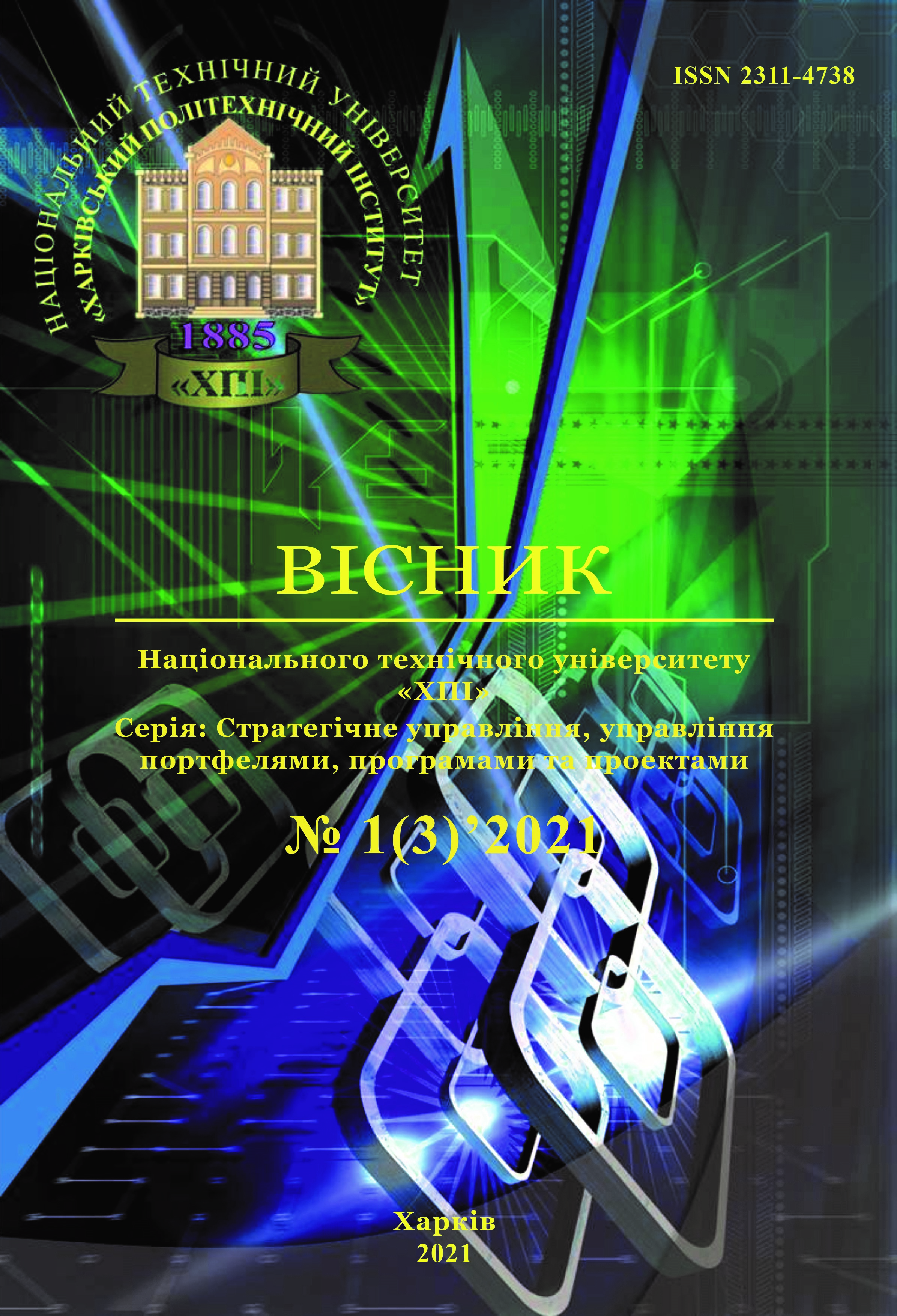IDENTIFICATION AND RISK ANALYSIS OF IT-AUDIT PROJECTS
DOI:
https://doi.org/10.20998/2413-3000.2021.3.4Keywords:
project; project management; IT-audit projects; project risks; risk management of IT-audit projectsAbstract
In a relatively short period of time, the field of information technology from a conventional, sometimes secondary industry, has become one of the main drivers of the world economy, becoming a catalyst for tectonic changes and transformations in many other industries. The Ukrainian IT industry now successfully competes in the global market and is a reliable source of foreign exchange earnings. Today, Ukrainians can create, promote and sell IT products in global markets. They are interested not only in creating a product, but also in its active development. The productive and efficient operation of IT enterprises requires constant monitoring and control of the real state of the IT infrastructure. Assessment of the state of information and / or financial system of the enterprise is urgent and necessary. Therefore, IT audits are being introduced more and more often at such enterprises. It needs skillful and effective management to achieve the best results. Based on the results of the analysis of the works of domestic and foreign scientists and researchers in the field of IT audit project management, it is concluded that this aspect is poorly studied. IT audit projects have specific risks. These risks need to be investigated in detail. Using the method of the causal diagram of Ishikawa, the article identifies the factors influencing the increase in time and cost of IT audit projects. It was found that a significant part of the deviations and uncertainties that lead to an increase in time and cost are directly related to the stockholders of IT audit projects. Stakeholders of IT audit projects have been identified. Stakeholders include: owner, initiator, customer, investor, project managers, project team or auditors, competitors and other stakeholders. The influence of the main groups of stakeholders on reducing the time and cost of IT audit projects using the method of the causal diagram of Ishikawa is analyzed. Through the prism of opportunities and threats of stakeholders of IT audit projects, the risks of these stakeholders for projects are identified.
Published
Issue
Section
License

This work is licensed under a Creative Commons Attribution-NonCommercial-ShareAlike 4.0 International License.
Our journal abides by the Creative Commons copyright rights and permissions for open access journals.
Authors who publish with this journal agree to the following terms:
Authors hold the copyright without restrictions and grant the journal right of first publication with the work simultaneously licensed under a Creative Commons Attribution-NonCommercial-ShareAlike 4.0 International License (CC BY-NC-SA 4.0) that allows others to share the work with an acknowledgement of the work's authorship and initial publication in this journal.
Authors are able to enter into separate, additional contractual arrangements for the non-commercial and non-exclusive distribution of the journal's published version of the work (e.g., post it to an institutional repository or publish it in a book), with an acknowledgement of its initial publication in this journal.
Authors are permitted and encouraged to post their published work online (e.g., in institutional repositories or on their website) as it can lead to productive exchanges, as well as earlier and greater citation of published work.

